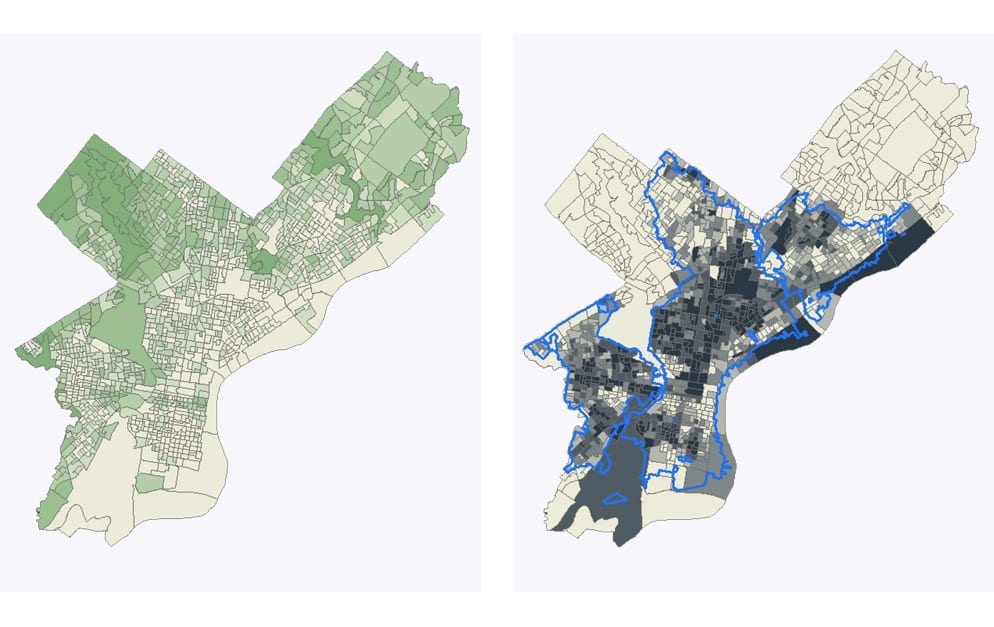Studies synthesized by Vibrant Cities Lab show that urban tree cover may be correlated with existing social and economic inequalities. Neighborhoods with higher incomes, education levels, home ownership, and populations of majority ethnic groups may have higher proportions of tree canopy cover. This furthers the economic and social divide between communities, as the groups that are most in need of forest benefits like shade are deprived access to them.

Studies from Guangzhou (China) and Philadelphia (U.S.) show how creating an equity index can help achieve equity in the spatial distribution of green infrastructure. However, if planning and implementation ignore socioeconomic conditions, well-intentioned actions may in some cases result in ‘green gentrification.’ For example, an investment in new street trees for a poor neighborhood could drive up property values, squeezing out lower income residents.*
Along with spatial equity, equitable access to a bundle of rights, such as the rights to trees, water, and benefits provided by inner forests should also be considered. Additionally, resources to implement and maintain green infrastructure projects in socio-economically disadvantaged areas may also be important to consider. For instance, homeowners may be more incentivized to maintain street and yard trees than short-term renters or rental property owners.
Resources
Urban Forestry Toolkit (Equity) | Vibrant Cities Lab
Environmental Justice | Community Commons
Tree Equity Career Pathways Action Guide | American Forests and Vibrant Cities Lab
The dimensions of urban green equity: A framework for analysis | Nesbitt et al. 2018
*See section on Affordability for more information.











